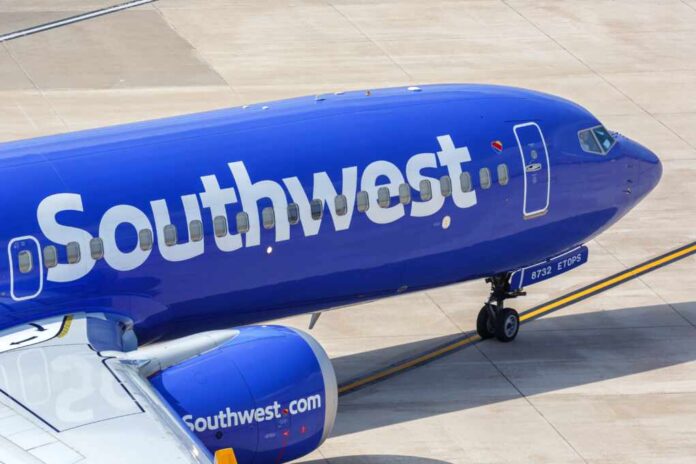
Southwest Airlines plans to end its operations at four airports and cut 2,000 jobs by the end of 2024, in response to dismal first-quarter earnings.
Southwest Airlines pulls out of four airports amid expected layoffs https://t.co/9qshY27iLi https://t.co/9qshY27iLi
— Washington Examiner (@dcexaminer) April 26, 2024
Both Southwest Airlines and American Airlines reported heavy losses in 2024’s first quarter, amid rising labor costs and issues with aircraft manufacturing giant Boeing.
Southwest Airlines reported a first-quarter loss of $231 million.
“While it is disappointing to incur a first quarter loss, we exited the quarter with healthy profits and margins in the month of March,” Southwest CEO Bob Jordan said in a statement. “We are focused on controlling what we can control and have already taken swift action to address our financial underperformance and adjust for revised aircraft delivery expectations.”
Those “revised aircraft delivery expectations” come to the forefront as Boeing cuts its airplane production, causing shortages and delays.
After several high-profile incidents involving Boeing’s planes this year, including one instance in February in which a door plug blew out of a 737 Max 9, the company has tightened quality control practices, significantly limiting production.
Jordan says the delays present “significant challenges for both 2024 and 2025.”
Southwest shares were down 9% to $26.70 on Thursday following the report.
Southwest Airlines plans to respond by cutting costs in 2024.
The airline will end operations in Cozumel International Airport in Mexico, Syracuse Hancock International Airport in New York, Bellingham International Airport in Washington state, and George Bush Intercontinental Airport in Texas.
Southwest plans to slow hiring, cutting 2,000 jobs, or 3% of the airline’s 74,000 employees. It wasn’t specified whether layoffs will be part of the intended job cuts. The company also intends to offer optional time off for employees.
They expect to end the year with 802 planes, down from the earlier estimate of 814.
“We are focused on achieving our financial prosperity goals and creating value for our Shareholders, while we adjust to changes in our aircraft delivery plans, Customer travel patterns and preferences, higher fuel prices, and other cost pressures,” Jordan said.














